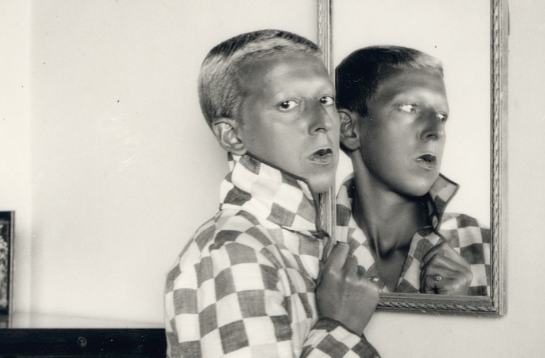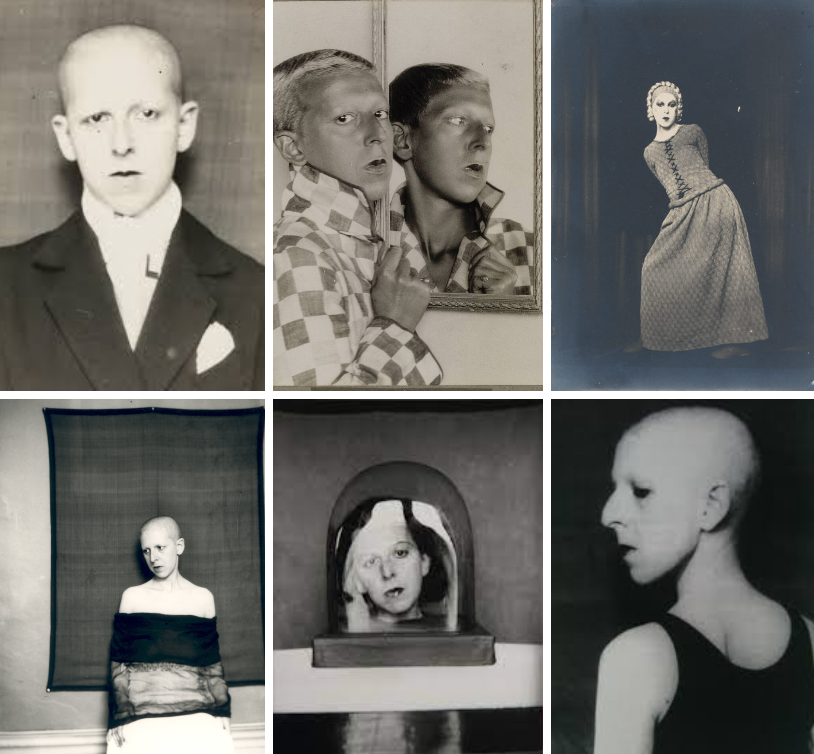Claude Cahun was a French surrealist photographer, sculptor, and writer who inspired Cindy ShermanThough she made sculpture, embedded herself within activism and wrote extensively, Cahun is mostly synonymous for her contributions to surrealist photography, particularly her striking self-portraits, in which she questioned societal expectations of gender years ahead of her time and inspired the likes of Cindy Sherman, Gillian Wearing and Nan Goldin.Though she made sculpture, embedded herself within activism and wrote extensively, Cahun is mostly synonymous for her contributions to surrealist photography, particularly her striking self-portraits, in which she questioned societal expectations of gender years ahead of her time and inspired the likes of Cindy Sherman, Gillian Wearing and Nan Goldin.. Schwob adopted the pseudonym Claude Cahun in 1914. Cahun is best known as a writer and self-portraitist, who assumed a variety of performative personae.
Cahun used the pronouns both she/her/hers and they/them/theirs; she/her/hers because that is what was used for Cahun when they were alive and used themself; they/them/theirs because of their oft-discussed detachment from being a woman or a man.
Claude Cahun is a perfect example of someone who wanted to push the boundaries of gender roles in a stereotypical society.
Claude Cahun, born Lucy Schwob was a French photographer, sculptor and writer. Her most well known work is her surrealist self-portraits in which she represented a multitude of different personas. Moving to Jersey in 1937 with her stepsister and lover, Marcel Moore, she resisted the occupation taking place on our island. During their lives together in Jersey, the women decided to mount an underground resistance campaign following the Nazi’s occupation of the Island in June 1940. The two campaigned against them, provoking them in a risky manner for four years until 1944 when the Gestapo investigated them. Narrowly avoiding a death sentence, the two were freed from prison on the 9th of May 1945 following Jersey’s Liberation. Remaining on the island until 1953, Cahun suffered from ill health which unfortunately resulted her passing in hospital on the 8th of December. After this, Moore continued to live on in Jersey for many more years until sadly ending her own life.

Her life was a representation of resistance, defying the conventional ideas of beauty and femininity with her shaved head and male attire, challenging them. This was almost revolutionary in the 1930’s, being in a same-sex relationship and exploring her identity in a difficult time period of traditional values. Whilst Claude Cahun was alive, she produced many pieces of work which The Jersey Heritage Trust collection represents. Her work challenged the politics of gender and identity, alongside the work of many male Surrealists who depicted women as objects of male desire. She used domestic settings such as a cupboard at home and introduced something interesting and new to this environment, exploring gender fluidity.
Though she made sculpture, embedded herself within activism and wrote extensively, Cahun is mostly synonymous for her contributions to surrealist photography, particularly her striking self-portraits, in which she questioned societal expectations of gender years ahead of her time and inspired the likes of Cindy Sherman, Gillian Wearing and Nan Goldin.
PHOTO ANAYLSIS
With her signature androgynous look and surrealist-inspired use of reflection, this iconic self-portrait exhibits everything that made Cahun such an important artist. Whereas mirrors would traditionally be used in classical portraiture to emphasise feminine beauty or narcissism, here Cahun subverts the symbolism to reject such reductive depictions of gender.
Deliberately turned away from her own reflection to face the viewer with an air of self-assurance, the image presents femininity as conflicting and contradictory, a nuanced combination of reality and artifice. Facing the camera, Cahun has her collar turned up to protect her neck from view, yet in her reflection the artist’s neck is revealed in a deliberate show of eroticism.
MOOD BOARD

“one of the most curious spirits of our time.”
